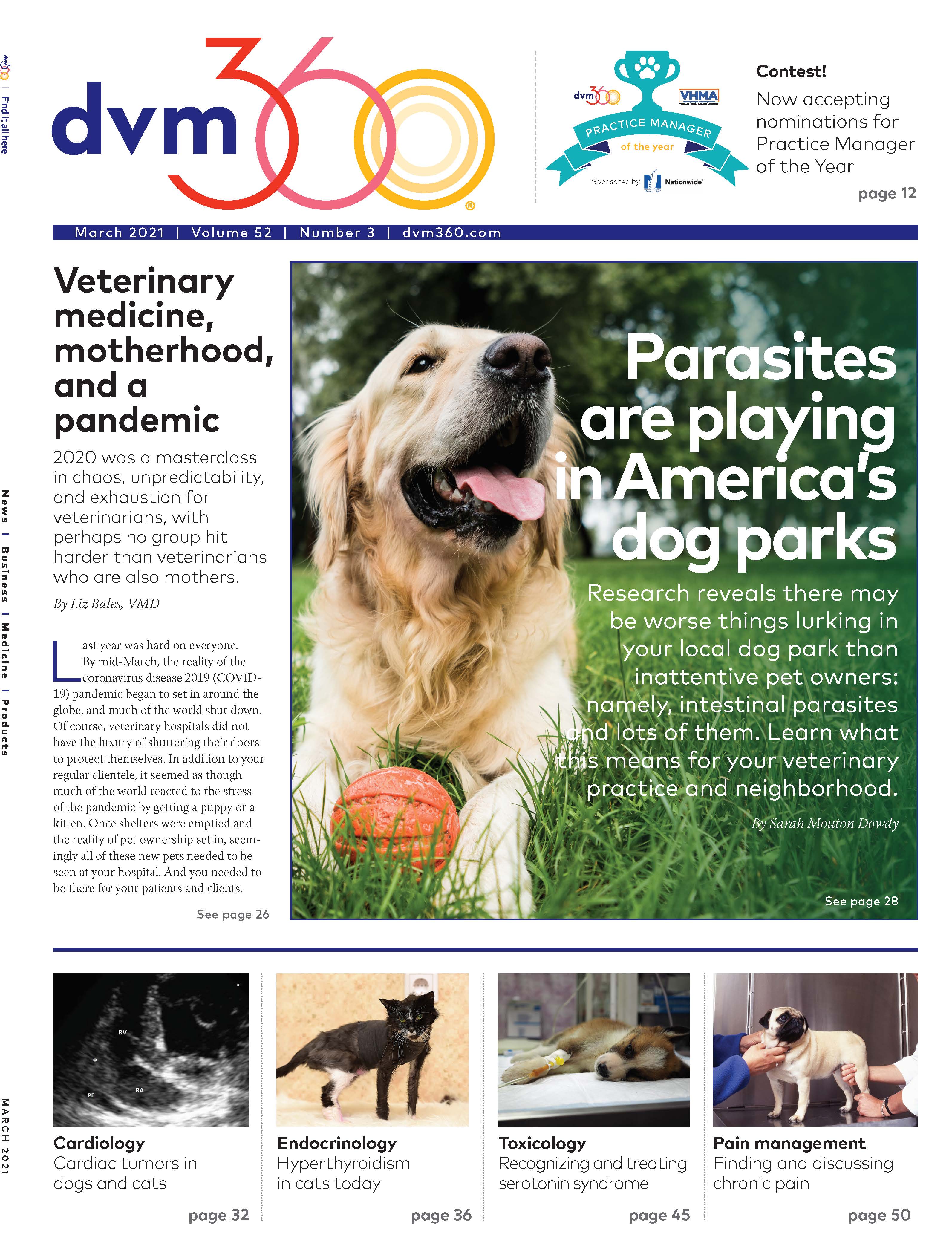The heart of resiliency in veterinary medicine
“One day you will tell your story of how you overcame what you went through and it will be someone else’s survival guide.” —Brené Brown
Friends Stock / stock.adobe.com

Resiliency—the ability to recover from setbacks, adapt well to change, and keep going in the face of adversity—is a hot topic in veterinary medicine today. Although we need to be cognizant of client emotions, we must also care for ourselves and our team. In a recent survey, more than 70% of veterinarians reported that both they and their staff felt moderate to severe distress when faced with obstacles that prevented them from providing appropriate patient care.1 Acknowledging these feelings and discussing them with coworkers, family, or a professional is essential to maintaining well-being and providing the best patient and client care.
A common misconception among veterinary professionals is that if we were truly resilient, we would not experience the intense emotions inherent in this profession. This way of thinking could not be further from the truth. Allowing yourself to feel every emotion and still function daily is at the heart of resiliency in veterinary medicine and vitally important as an individual. Permitting ourselves to feel and process what makes us who we are is the next step in mastering true resiliency.
“Showing up” in a pandemic
Regardless of individual roles, the pandemic has pushed everyone in veterinary practices to support patients and communities through creativity and collective problem-solving. In addition to unprecedented caseloads, teams have been navigating new protocols to protect associates, clients, and patients and still provide excellent care. These new approaches to triage, reallocation of staff, and changes in patient care have led to amazing innovation throughout the industry, but doing so has come at the cost of increased burnout.
The initial crisis rally and altruism faded over the course of 2020 due to understandable fatigue. You may have succumbed to the various crises you faced, with varying capacities to adapt and cope. Don’t worry; no one was untouched by persistent anxiety or the need to repeatedly adjust their normal routines and ways of thinking.
Living day-to-day
We are currently operating in survival mode. Our blinders are more likely to be up, making it challenging to see the bigger picture or to have an optimistic perspective. When in this self-protective mode, energy and time can feel scarce. Anger, frustration, and resentment can overshadow our ability to find the positive in situations. Survival mode has become a defense mechanism, creating a protective, insulating barrier between you and the world. Feeling alone and overwhelmed may result in intense feelings of isolation.
Survival mode can also exacerbate preexisting tensions, such as the “us versus them” phenomenon of the front desk team versus treatment team, emergency clinicians versus specialty clinicians, associates versus leaders, and even more. Compassionate, respectful communication among teammates is paramount to providing high-quality patient and client care. Building a sense of community can also create a more fulfilling work environment. Without it, we may be more likely to self-sabotage and interact negatively with colleagues.
When you feel like you have to just “get through it” or “no one will understand,” you might respond negatively to a conversation about building resilience. Veterinary medicine has a longstanding culture of “I should be able to handle this,” and there are stigmas and fears of being judged and deemed inadequate if we demonstrate that we’re struggling. This mindset hinders our ability to access the mental health care that we may need.
Leadership’s role
Practice leadership must take responsibility for creating an environment that promotes well-being and safety. It takes resilient individuals to build a resilient community. This community can only thrive if there is clear evidence that leadership is doing their part to cultivate a less toxic environment and culture.
Are your practice leaders promoting conversation and resource allocation that supports staff well-being? Does your team feel that their well-being is a priority, or do they have the perception that decisions are motivated by profit? If you believe your practice culture to be people-driven, what conversations and initiatives are being actively supported to demonstrate this belief? How do values of respect and care for individual associates show up in the practice?
Saving ourselves
It is human nature to want any pain to go away quickly. We do not like being uncomfortable physically, emotionally, or psychologically. There is no quick fix that can magically transform our work environments, but there is more inherent wisdom and resilience in each of us than we give ourselves credit for.
So, how do we save ourselves and our profession in the face of so much pessimism and exhaustion? Here are a few ideas you can implement to combat these negative feelings:
- Designate well-being champions in the practice who support conversations around reconnecting and staying connected with our individual and collective “why.”
- Create space for robust dialogue around the incentives to practice steps toward resilience and the perceived reasons not to try.
- Determine how the desired culture can be communicated and demonstrated authentically to all associates.
- Ask yourself important questions: Does your practice have regular, collaborative conversations that examine current struggles and potential solutions? What can you celebrate? What resources are available to support the desire for a compassionate, collaborative community?
Lori Harbert, LCSW, a social worker for more than 20 years, specializes in mental health counseling, trauma-informed care, crisis counseling, grief and bereavement counseling, and leadership building. She developed and launched BluePearl’s first health and well-being program that provides resources and support to more than 6000 associates.
Sonja Olson, DVM, is a full-time wellness educator with the BluePearl health and well-being team, where she educates EmERge program clinicians, BluePearl associates, and regional social workers about wellness topics. She is also certified as a mental health First Aid instructor and compassion fatigue educator with Green Cross Academy of Traumatology's Figley Institute.
Reference
1. Moses L, Malowney MJ, Wesley Boyd J. Ethical conflict and moral distress in veterinary practice: a survey of North American veterinarians. J Vet Intern Med. 2018;32(6):2115-2122. doi:10.1111/jvim.15315
